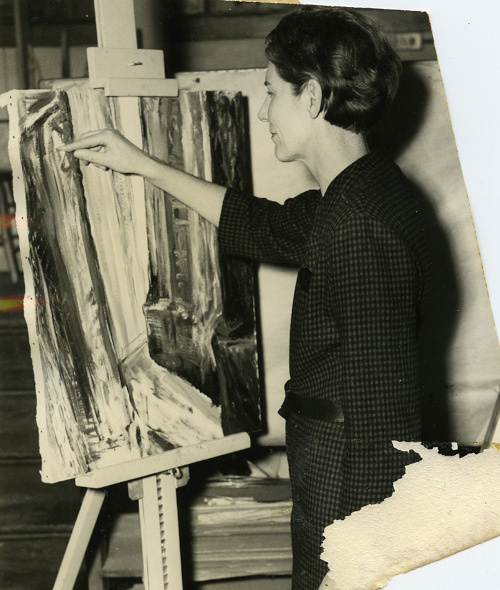Constance Fowler
Constance Edith Fowler (1907-1996) was born in International Falls, Minnesota. Though academically she did fairly well, design and art were always her passions and the areas she excelled in the most. Her family moved to Pullman, Washington in 1923 and she subsequently attended Washington State College in 1929 to study art. It was 1932 when her family moved again, this time to Salem, Oregon. In Salem, Fowler was offered a job at Willamette University in the small art department where she found herself to be the sole faculty member running an underfunded program.
Despite her issues at Willamette, Fowler earned Carnegie Grants, grants for teachers that allowed her to take classes and improve her art skills over the summers of 1936-1938 at the University of Oregon under the tutelage of Andrew McDuffie Vincent. In 1940, she earned her Master of Fine Arts from the University of Oregon.
Fowler was a multimedia artist, working in oil painting, watercolor, and woodblock print. She was also, like many mid-20th century artists, inspired by Abstract Expressionism -a movement that allowed the inner feelings and thoughts of the artist to be represented on the canvas- but only fully incorporated abstraction later in her life. After the 1960s, many of her works maintain a distinctly abstract quality with less concern for representational realism. While in Oregon, she continued to depict nature in a naturalistic and simplistic way and continued in this manner even when she left Willamette in 1947 to teach at Albion College in Michigan. In 1965 after her retirement, Fowler moved back to Oregon, settling in Seal Rock, Oregon, where she lived for nearly 30 years until her death in 1996.
Though she exhibited mainly on the West Coast, Fowler also exhibited in New York and traveled around Europe. Her ability to uproot her life, move around, and travel heavily informed her work and artistic beliefs. Going to Michigan inspired her to paint more abstractly as she re-examined landscape and became a stringent defender of abstract art. She was recorded in the Albion Evening Recorder in 1947 saying, “it is not possible to represent nature on canvas, for all that can be expressed is an organized interpretation of the artist's feelings about nature” and her philosophy of painting nature as she experienced it was crucial for her descent into abstraction. She wasn’t tied by the need to naturalistically depict anything but painted as she wanted.

